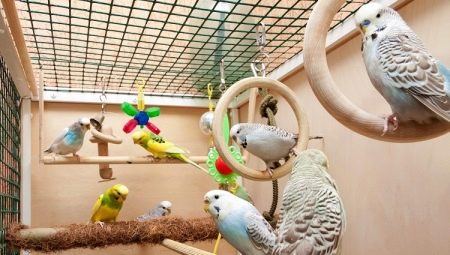Before you get a budgie, you should think about his place of residence. A bird cage should correspond to its physiological needs and active life. Since the bird spends most of its life in this "house", the choice of housing should be taken responsibly.
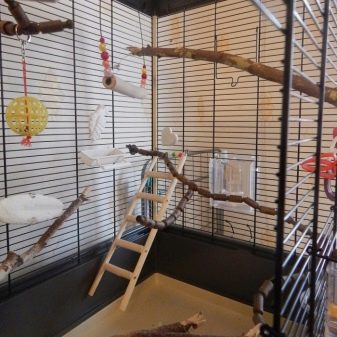
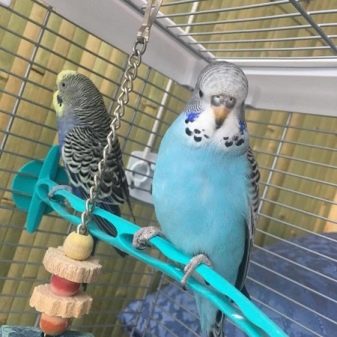
Design features
In the modern zoological market, you can choose a cage for a budgie or for a couple from a wide range of offers. Bird structures for sale, equipped with towers, passages, unusual roofs, balconies and decor. Such "palaces" look attractive, fit perfectly into the interior, but can be impractical for a parrot.
For a feathered pet, you should choose one the option of a home that will not scare him away will not create difficulties during flights and vigorous activity of the bird, and will also be easily cleaned.
It is better to buy a cage for a budgerigar with a minimal decor and a straightforward design, its device does not have to be complicated. Such a cage can also be used to transport a feathered bird if necessary.

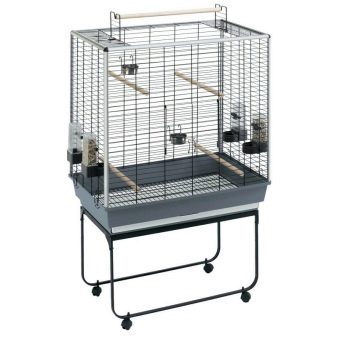
The form
According to bird watchers for a feathered pet it is worth choosing a square-shaped cell. The angles that are available in the design have a beneficial effect on the psychological state of the bird, as in these places the pet will be able to hide in case of danger. A flat roof can become an additional playground for a parrot for games, so the elongated structure will be the best option for a wavy pet.
A round cage doesn’t quite fit parrots, since, despite the decorativeness and interesting appearance, for the bird it will create the erroneous illusion of space and vastness. It is also worth noting that the curvature of the walls will become an obstacle when climbing and will create a lot of obstacles during movement. Structures that do not have a specific shape are considered unsanitary, since they are very difficult to clean.
Deciding on the shape of the cage for a budgie, it is worth knowing that a simple house where a bird can soar will be the best option.
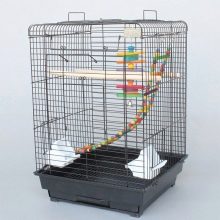
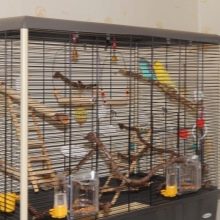

Dimensions
One of the most important criteria when choosing a dwelling for a budgie is its size. The minimum dimensions of the cage are considered acceptable only if the bird will be able to freely fly, and the house itself will be used only for food and relaxation. In a situation where the feathered bird is constantly in the cage and does not fly out in order to stretch its wings, he should not purchase a dwelling with small dimensions. The minimum dimensions of a bird’s free-cage are as follows:
- length - 0, 4 m;
- height - 0, 3 m;
- width - 0.25 m.
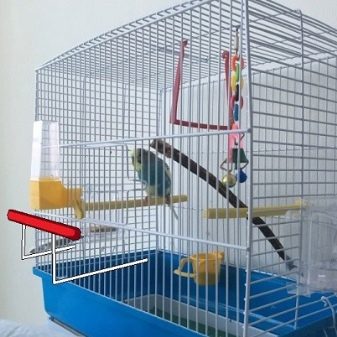

For two pets, the house must have large dimensions:
- length - 0.6 m;
- height - 0, 4 m;
- width - 0, 3 m.
When calculating the dimensions of a dwelling for a parrot, it is worth paying attention to its size. For a large bird, it is worth choosing a cage whose length is 5 times the length of the pet itself.
If the house has several perches, the bird should fly freely from one to the other and at the same time not touch the walls with its tail.
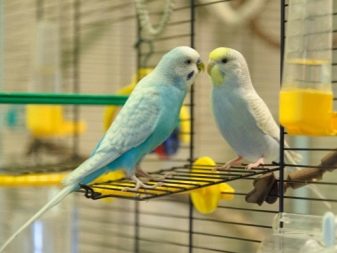

Materials
Experienced bird watchers are advised to buy for pets or make all-metal cages on their own. The reason for their popularity lies in good wear resistance, strength and optimal hygienic characteristics. Among the popular houses for parrots, the following can be distinguished:
- copper;
- zinc coated copper;
- wooden;
- chrome and nickel plated from stainless steel.
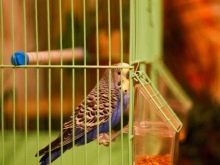
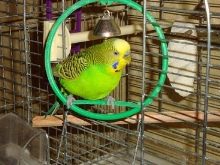
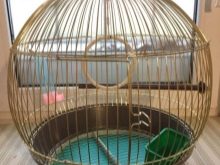
When the galvanized cell is poorly assembled, a detachment of the metal layer can occur, and this threatens the poisoning of the feathered, which can eat the fallen part. A wooden cage does not cause the difficulties described above. In a dwelling made of wood, the bird feels warm and comfortable. The safest breeds are linden, maple, willow, beech, apricot, birch.
It is strongly not recommended to place parrots in cages made of coniferous, aspen, acacia, chestnut and oak, as they contain elements that harm birds. It is also worth remembering that the bars of the cell should have a diameter of 1-2 mm. In order for the birds not to gnaw the house, they should put twigs or pieces of bark inside. A worthy version of the material of the cage for a parrot will be stainless steel, but without paintwork.
The best cover for such a house is nickel or chrome.
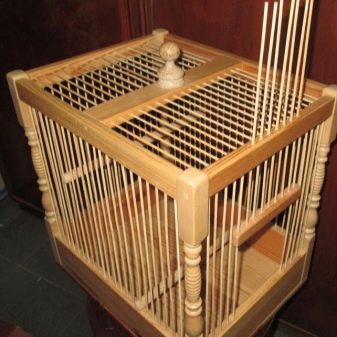
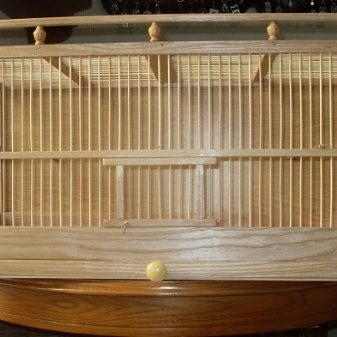
How to choose?
The choice of cage and the conditions of keeping the budgerigar have a direct impact on its health and activity, therefore a place for breeding and residence of the feathered must be suitable for him in all respects. If the cage for the parrot is unsuccessfully selected, then staying in it can negatively affect his well-being, health, development, appearance, and can also cause the death of the bird.
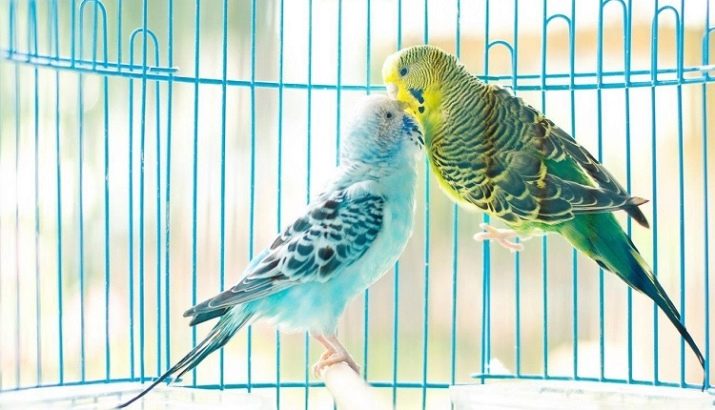
In order for the bird’s living not to stress it, it’s worth buying a cage, guided by the following parameters.
- The presence of the pallet, it contributes to the ease of cleaning the house.
- Existence of a floor lattice. Thanks to this element, the parrot does not eat droppings and fallen food.
- Hanging feeders.
- Arrangement with sides at the bottom of the structure. The beads help to collect garbage that scatters, and also prevent it from scattering around the room.
- The absence of dangerous gaps in the lateral parts of the cell. They can be traumatic for the feathered.
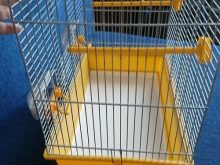
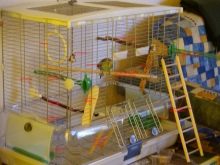

When buying a home for a pet, it is worth paying attention to the number of doors and their features. Doors can open as follows:
- raising up;
- lowering down;
- plowing to the sides;
- movement up and down.
It is also worth noting that the doors should not sag in the hinges, make a creaking sound, but they should easily open. The main thing that the owner of a feathered pet should not forget is that you should not buy a small cage of irregular shape.
The plucked feathers, stress, indifference and low activity of the parrot may indicate that the house is not selected correctly.
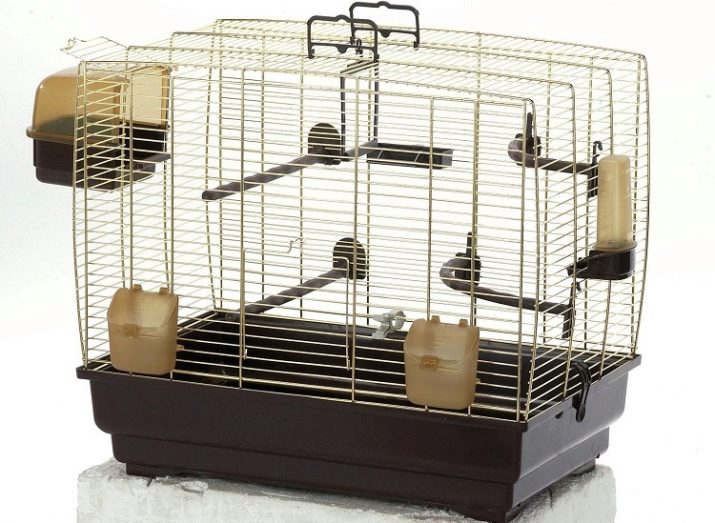
How to equip?
If you want to have a budgie in your apartment, the owner must equip the cage, arrange its contents correctly and make its design not only comfortable for the tenant, but also as close as possible to his natural environment. In the cage of this unpretentious bird should be everything that she needs for life.
- Little hearts. A parrot usually spends a lot of time on them. They are bought separately or in conjunction with the cell. If the perch is smooth, then it can cause rubbing calluses on the feet of a feathery bird, so you should give preference to plastic poles with sandpaper.
A worthy version of this device will be a wooden pole with a diameter of 15-20 mm. The number of hearts in one cell is usually equal to two, they are set opposite each other.
- Feeders - These are containers made of plastic or ceramic, their fastening occurs with the help of cell rods. The ideal number of feeders in one house is three. The first is for grain and dry food, the second is for minerals and additives, and the third is for wet food, that is, cereals, fruits and vegetables.
- Drinking bowls become a worthy substitute for cups or bowls of water that the bird easily knocks over. For one or two individuals in the cage, one automatic drinker is enough; if there are more birds, then you should put two.
- Mineral stones, chalk, pumice. These solid objects are designed to grind the feathered beak.
- Toys If the pet is just settled in a new home, then do not clutter the cage with a lot of entertainment. After mastering a new house, several toys can be placed in it. As an option, swings, spinning balls, a mirror, a bell are used.
- Branches must always be present in the cage of a budgie. The feathered one uses them not only as an entertainment, but also for sharpening the beak. The only thing worth remembering is that you can’t put a branch from a conifer in the parrot’s house, as it can harm its health.
- Paper. Put a paper sheet on the pallet, which helps absorb unpleasant odors. It is not recommended to use newspapers, as they have a rather aggressive texture.
- Bathing. If the dimensions of the cage allow, then in it you can install a bathing suit, which looks like a plastic box with water poured at the bottom. The device must be securely attached to the cell rods.
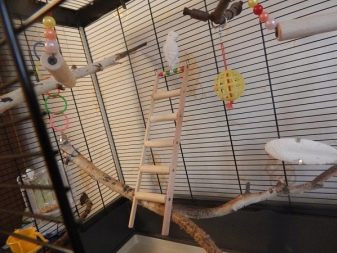
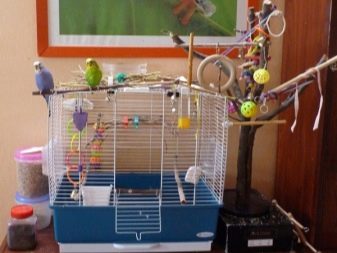
Homemade Options
Having decided on the parameters of the cage for a budgie, you can proceed to its independent production. For this work you will need to acquire:
- tape measure;
- plywood sheet;
- in pencil;
- a sheet of paper;
- pliers
- nails or screws;
- sandpaper with a fine fraction;
- glue for wood;
- a hammer;
- nippers;
- metal mesh, in which the cells are 1-2 cm;
- construction stapler;
- screwdriver;
- wooden slats with a section of 2 by 5 cm in the amount of 12 pieces;
- metal profile;
- a file;
- screwdriver;
- a corner;
- canopies.

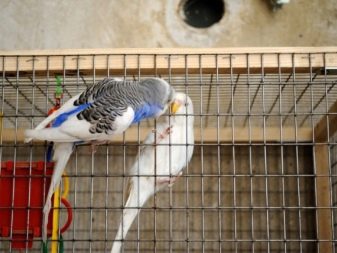
To make a cage measuring 0.6x0.25x0.35 meters, it is worth following these steps.
- The bottom is cut out of sheet plywood in the form of a rectangle with dimensions of 0.6 by 0, 25 meters.
- Along the edges of the bottom are filled with slats, which will serve as sides.
- From previously cooked racks 3 parts of small width are cut along the bottom.These elements will become grooves for the cell, they are attached to the base with glue.
- From metal profile a sheet is cut out for the pallet, the dimensions of which will allow it to enter the grooves. The front bent 90 degrees to facilitate the cleaning process.
- 8 blanks are cut from the rails, with which mesh walls will be attached. Their length should be equal to the height of the cage.
- With a screwdriver holes are made into which parts of the mesh will penetrate.
- Wood blanks lubricated with glue and fastened together to obtain a total of 4 wooden corners.
- A part of the grid is measured and cut out, which is subsequently attached with a building stapler to glued planks.
- Next is the top of the cell. Wood slats are mounted on the sides, holes must be drilled in advance for fixing the mesh. The same rail should be mounted in the center.
- On the back, you should attach the canopies, then install the roof for the house. One half of the roof will open, for this it will have a latch.
- In the front wall is to cut a hole for future doors. According to its size, a rack frame is made, and a grid is stretched over it. The loop and the lock are made of wire.

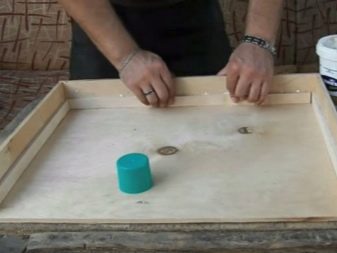
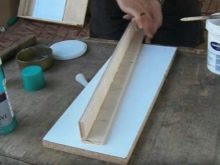
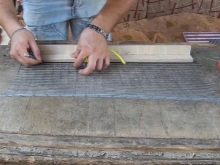
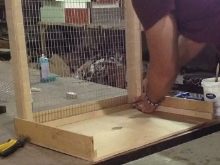
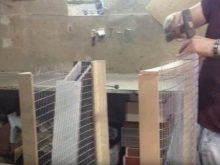


Where to install?
The place where the cage with the parrot will be located should be well lit, however, direct sunlight should be avoided, as this can cause heat stroke. Do not place the cage with the pet in a room where there are sharp temperature changes and drafts. It is undesirable to put the design in the kitchen, because there are a lot of fumes, pungent odors and high temperatures that can negatively affect the well-being of the feathered. In the presence of adverse conditions, it is better to rearrange the pet's home.
Near the cage with a parrot Do not put poisonous plants, scented lamps, candles. At night, the structure can be covered with a cloth that passes air well. With this action, you can adjust the daylight hours for the bird. It is forbidden to cover the house during the day, as this can cause stress.
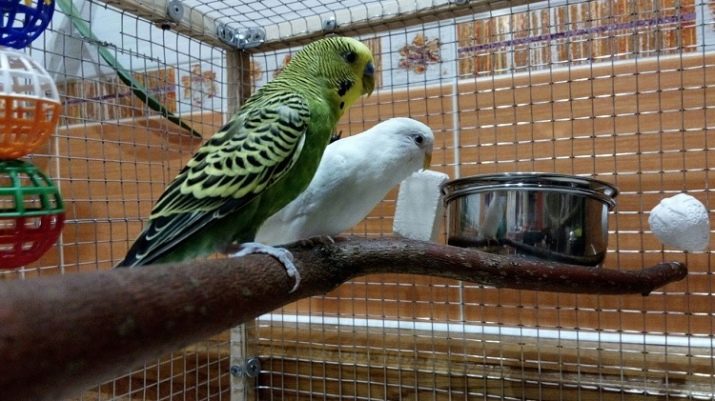
How to care?
The budgie cage needs to be kept clean and tidy, while general cleaning she needs every 7 days. Also, do not forget that the paper lined with the pallet should be changed every day. The pet feeder and drinker must be washed using a sponge every day before filling. Sand and sawdust are changed at least once in 7 days.
Wet cleaning in the home of a parrot should be carried out based on the degree of contamination.
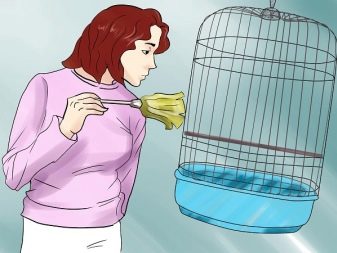
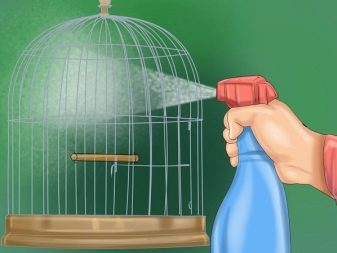
About what should be in the cage of a budgie, see the next video.
